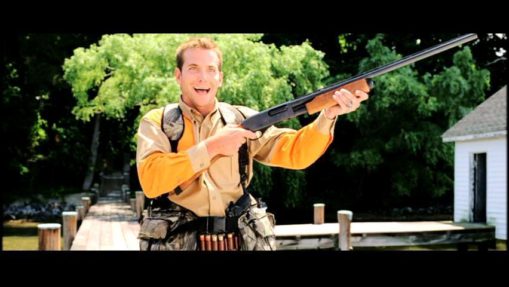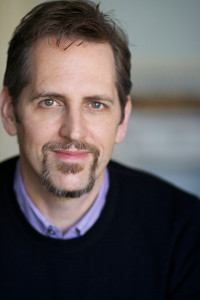“Bad Guys Close In” is the name Blake Snyder coined in Save the Cat for the second half of Act Two in a screenplay.
I think it’s a useful way to think about this section, especially if you replace the term “Bad Guys” (which some movies don’t have) with “Problems.”
We want problems closing in, more severely than they have before, after the “stakes raising” that usually happens at the Midpoint.
But that doesn’t mean it’s when the problems really start.
In my view, you want problems all along, in every scene and every section. “Problems” being another word for “Conflict.”
Most writers who try using the 15 Save the Cat “beats” seem to get that this section is where things really hit the fan. And that it only gets worse at the end of Bad Guys Close In, when “All is Lost.” What I often see in story ideas or scripts I read is not quite enough trouble prior to the Midpoint.
I’ve written about this before. I believe the first half of Act Two, what Blake called “Fun and Games,” is unfortunately named. Because usually it’s not so fun for the main character. If anything, they’ve entered an “upside down world” filled with “trailer moments” that fulfill the “promise of the premise” (his terms in quotes).
And what is the premise in any given story?
It’s a massive problem that will take the whole movie to solve. It begins at the Catalyst, usually in mid-Act One. The main character really engages with it for the first time in “Fun and Games.” And it only builds from there.
Fun and Games and Bad Guys Close In are really the meat of any story. They comprise virtually all of that long second act. The middle. And those are where things can really fall apart in a script, or an idea for one.
When I hear a logline, which happens a lot more these days during the group coaching session for my new course, what I’m usually trying to envision is the second act. What is the main character actively trying to do there, and what’s in the way? How can there be a sense of “punch-counterpunch” between them and their forces of opposition, that only builds and complicate due to actions they take?
Readers want to really be able to grasp that from a logline. And it should probably fit a known genre, whether in the traditional sense, or in Save the Cat’s use of that term.
And so how do you escalate things, in Bad Guys Close In? And make them even worse than they were before? Of course Blake has the first and final word on this. But I’ll add my two cents from what I’ve seen:
1. The “bad guys” regroup and strike back.
This is the main focus, typically. But what I would add is that whoever or whatever the opposing force is, it usually hasn’t just been sitting there for all of Fun and Games, while the main character rode to “false victory” at the Midpoint. Usually it’s already been engaged, and essentially winning. The fight is on. It just hasn’t gotten as serious as it will at this point. Maybe the “hero” has done something positive, for the first time, at the Midpoint, and now the gloves will be off.
2. The hero’s actions lead to reactions.
It’s way more compelling to see the hero act and make an impact, and find some success, only to be cut back down to size. Rather than just watching them suffer attack after attack and never really doing anything to temporarily put the “bad guys” on their heels. I don’t mean the good guys should be winning – almost never that – but they need to be active, throughout.
3. Internal fighting with allies.
Blake mentions this, too. Often the main character’s friends and commonly a B Story “love interest” turn on them in this section. So they’re more alone than ever. Why is this? Very often its because the main character, under pressure, has reverted to old ways that don’t serve them somehow. They’re not learning whatever lessons they need to learn to complete their “arc.” And the B Story character especially is there to protest that, and get them to look at it. (Note that the B Story also has its own scenes and those should also be building and complicating throughout Act Two.)
4. Things seem more important and harder now.
This is another tricky one, because if they weren’t already both important and difficult, the script probably doesn’t have the elements required on a concept level to be a really compelling story. But somehow it all gets even bigger and more urgent after the midpoint. And the impossibility of the goal becomes more pronounced and in the hero’s face. Often a limit is placed now, in terms of time or options. Where it feels like it’s all on the line right now.
5. It’s a series of difficulties, twists and turns.
Remember that both Fun and Games and Bad Guys Close In are sections. They’re not a single moment, scene or even sequence. Part of why Act Two tends to be where scripts fall apart is that there just isn’t enough story. There aren’t enough steps of action and reaction, and growing complication and difficulty. Movies (and TV pilots) can accommodate — and actually need — much more “story” than writers tend to realize. That’s what makes it fun for the audience — it’s a real journey, an odyssey even, that features a series of problems and actions to solve them that somehow continue to build. While organically connecting to each other in a cause-and-effect way.
And that’s what we all like to see, whether we realize it or not, when we watch a story, in any genre: a character we can root for, who is being punished severely. Where the problems keep coming but they also keep taking action. Believable action that makes sense and stirs things up in their world. They lose more than they win, but after Bad Guys Close in and All is Lost, they somehow find one last chance to reach their goal.



Thank you.
I would like to add that “bad guys” aren’t just external, they are internal too (apart from the conflict in the love story). The hero also starts doubting themselves and lose their focus. They might question their goal, realize the problem was not “them,” the enemy, but themselves.
Neo finds out that he is not “the one,” which throws him out of his orbit. Elizabeth realizes her prejudice was wrong. Gru goes to space and steals the moon, realizing his big dream, but we know that his heart is elsewhere when he sees the recital ticket floating in space.
Many writers, including Snyder himself, agree that “Bad guys close in” is the hardest part of a story to write. The difficulty might be coming from not knowing the villain well, but also not knowing the main character well enough to understand their internal struggles. To get this right, we might need to work further on the main character’s flaws and issues; maybe take another look at how we set up our first act.
I find your advice and guidance very helpful and informative. Thank you.
Thanks Erik. I find your remarks to be true to all stories whether a novel, screenplay, short story, or stage play. Conflict happens at moments we don’t always expect, and that could be many moments on the hero’s journey!
Erik, I suddenly considered that my heroine’s sidekick could substitute as the love interest and turn on her in this section. Like a betrayal. And then, like Han Solo having a change of heart and coming back to save the day, my heroine’s sidekick could do the same. Exciting! But does Tonto ever turn on The Lone Ranger? Or Sancho on Don Quixote? Or Watson abandon Holmes?
Like with Han Solo, they might temporarily but usually not permanently!
Great info, Erik! One of my stories has the “hero” going through several difficulties thru act II. Instead of one main problem he has to suffer several. If course in the end he is truly a hero and rewarded.